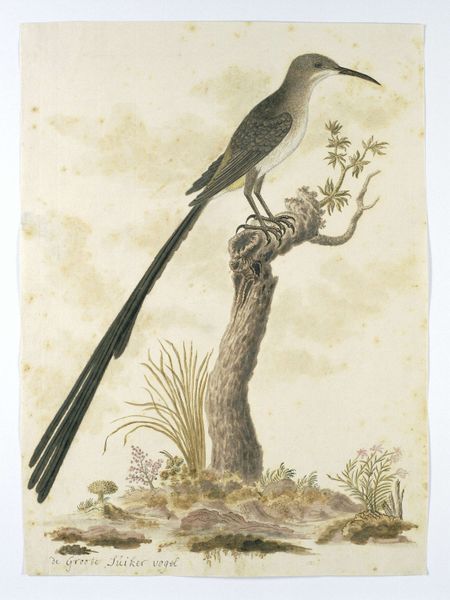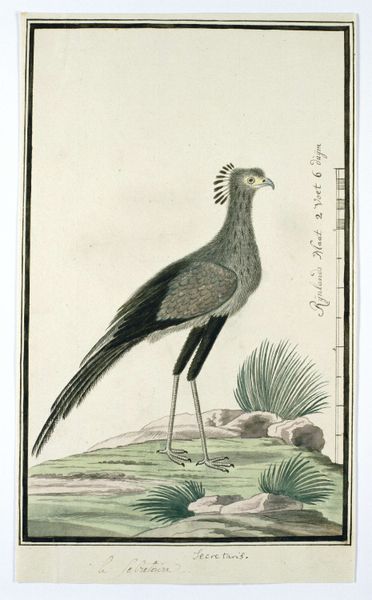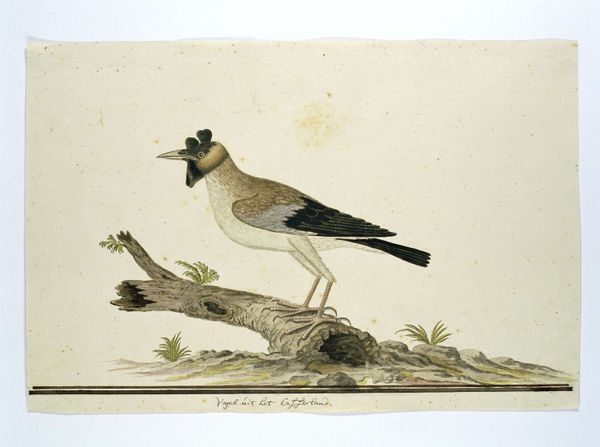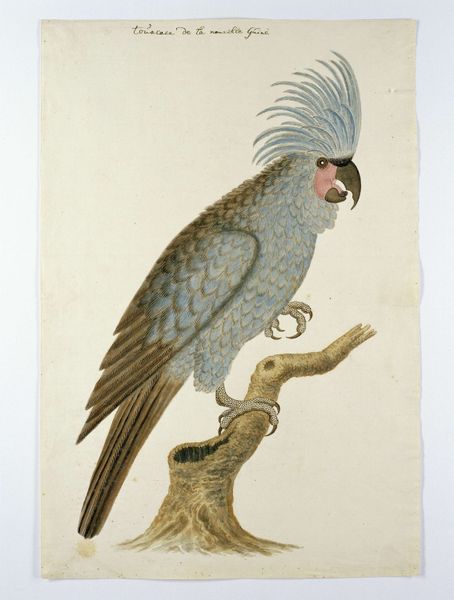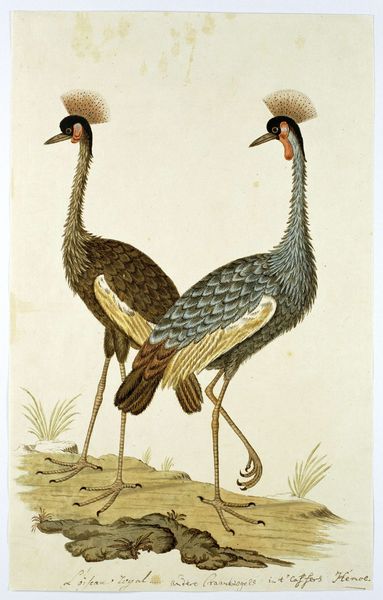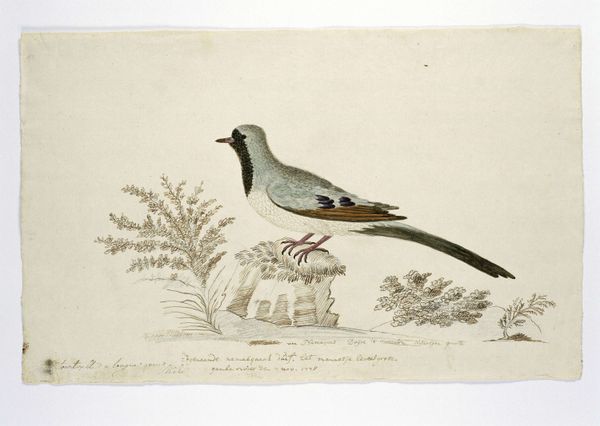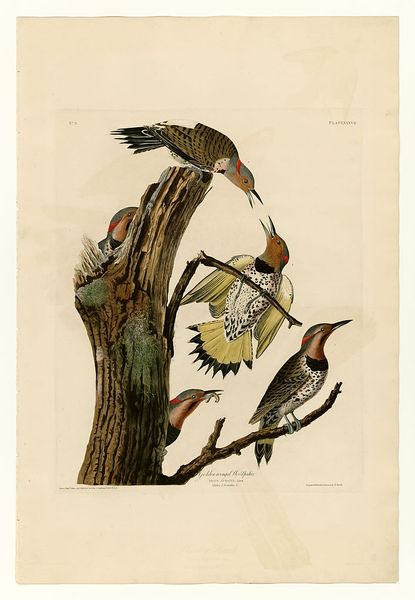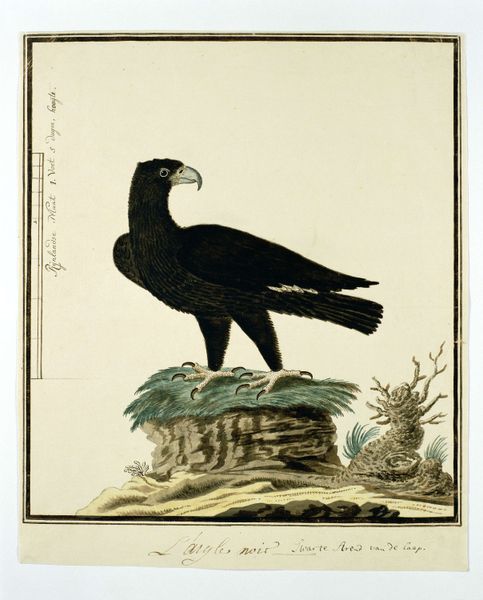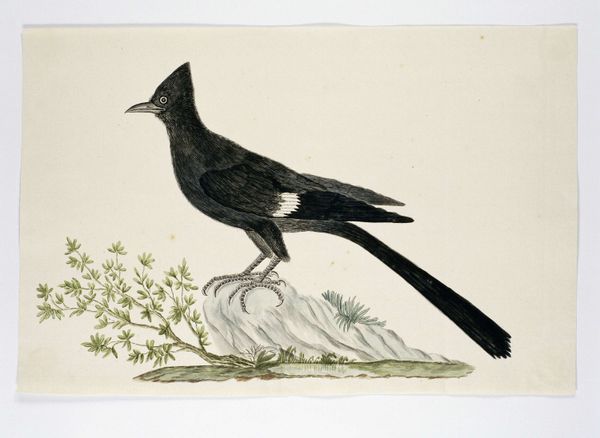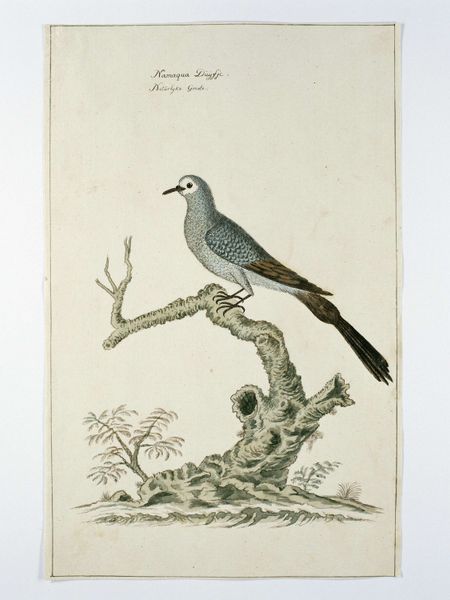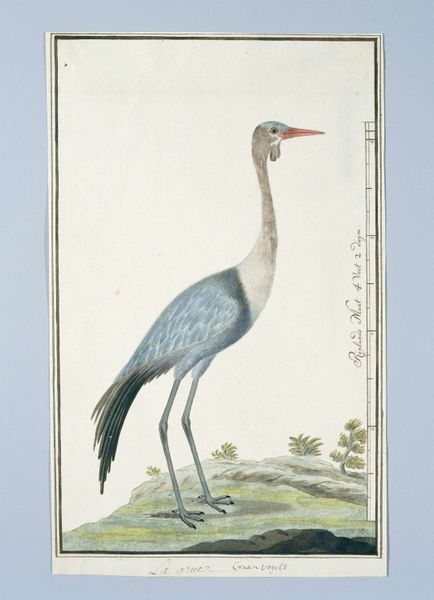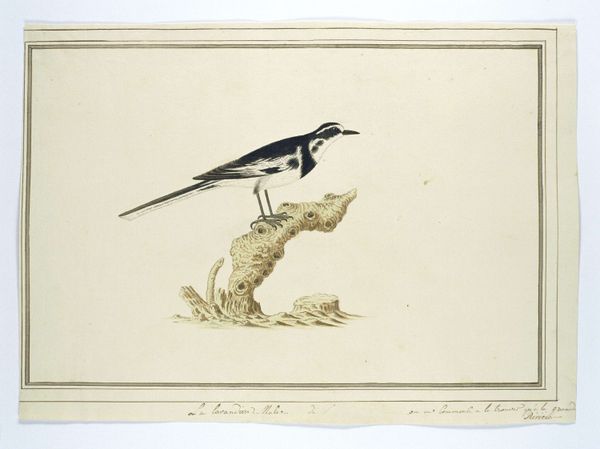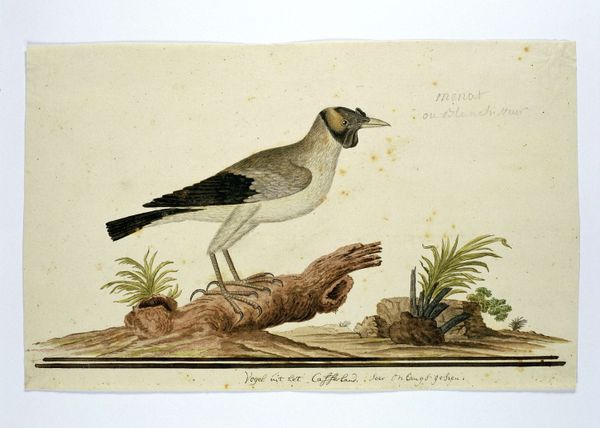
Dimensions: height 660 mm, width 480 mm, height 362 mm, width 273 mm, height mm, width mm
Copyright: Rijks Museum: Open Domain
Editor: So here we have Robert Jacob Gordon's "Creatophora cinerea (Wattled starling)," likely made between 1777 and 1786. It's a watercolor drawing, and I’m immediately drawn to how detailed the bird's plumage is. What can you tell me about the artistic approach to this work? Curator: I see a direct representation of the bird, almost clinical in its depiction. Gordon focuses intently on the precise rendering of its physical characteristics using the watercolor medium. This work’s significance resides in how it connects artistic production with the practices of scientific documentation and colonial exploration. What kind of labor went into its making, from obtaining the materials to the artist's hand at work, to transporting such pieces? Editor: That makes me wonder about the social context then... Was this commissioned, or part of a larger scientific study? Curator: Good questions. Examining the materials used – the source of the paper, the pigments in the watercolor – tells us about trade networks and the access Gordon had as an agent of the Dutch East India Company. He isn't just representing nature; he's transforming raw materials into a commodity, into knowledge itself, ready to be consumed and utilized back in Europe. This complicates our understanding, isn't it? Editor: Absolutely. It’s not just a pretty bird, it's a product of colonial systems, showing a transformation of natural resources and labor. That adds so many layers! Curator: Precisely! By tracing the production and consumption of artworks like these, we reveal a fascinating intersection of art, science, and power. Editor: Thanks! Now I see how materials and their origin reveal new layers of understanding.
Comments
No comments
Be the first to comment and join the conversation on the ultimate creative platform.
